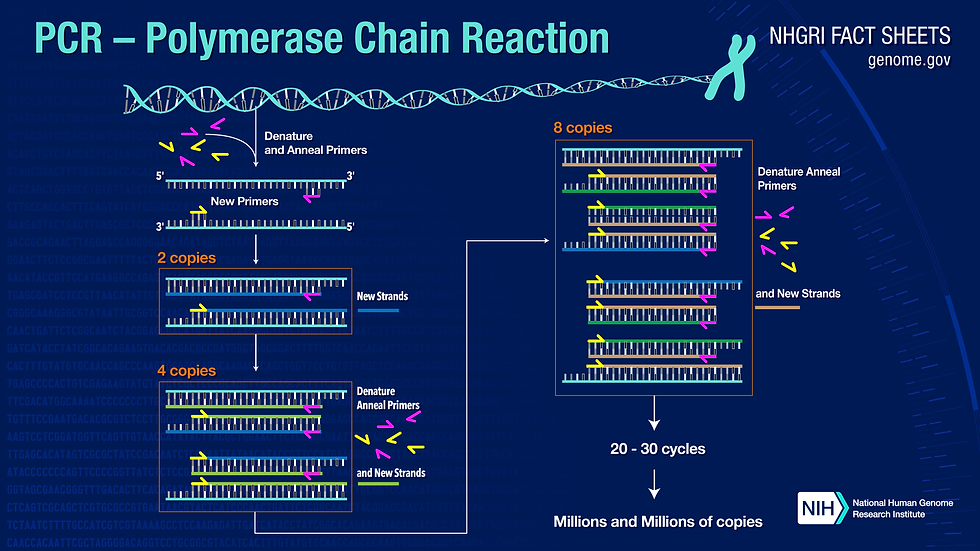Understanding Gene Therapy Basics: DNA, Proteins & Enzymes
- Ruthvik Yaparla

- Oct 13, 2024
- 5 min read
Updated: Dec 23, 2024
In a recent blog post, we covered the basics of DNA and proteins, highlighting their structures and functions: DNA stores genetic instructions and directs protein synthesis. Proteins, made from amino acids, have complex structures that determine their diverse roles in the cell, including acting as enzymes, which catalyze reactions.
We will now explore the importance of understanding these molecules in fields such as gene therapy, drug development, and biotechnology, emphasizing their crucial roles in medicine and technological innovation.
Introduction
DNA, proteins, and enzymes are the molecular foundations of life. DNA stores genetic information, proteins execute most of the cell's functions, and enzymes speed up vital biochemical reactions. Together, they drive innovations in science and medicine, allowing us to understand and manipulate life on a molecular level!
Source: Compound Interest. “The Chemical Structure of DNA | Compound Interest.” Compound Interest, 24 Mar. 2015, www.compoundchem.com/2015/03/24/dna/.
These molecules are crucial in gene therapy (where faulty genes are corrected or replaced), drug development (where treatments target proteins or enzymes to combat diseases), and biotechnology (where DNA and proteins are engineered to create new products, like genetically modified organisms or pharmaceuticals).
DNA: The Blueprint for Innovation
DNA carries the genetic instructions for life and is fundamental to biotechnology. By decoding and editing these genetic blueprints, scientists can modify organisms for beneficial purposes—creating crops resistant to pests, producing pharmaceuticals, or investigating genetic diseases(1). In gene therapy, faulty or missing genes can be repaired or replaced using techniques like CRISPR-Cas9, which is a molecular tool that acts like scissors, cutting and editing specific parts of DNA. For instance, gene therapy holds promise for treating genetic disorders like muscular dystrophy, where gene defects can be corrected at the DNA level.
Source: Khan, Marzia. “CRISPR-Cas9 Non-Viral Nanocarriers.” AZoNano.com, 11 Feb. 2022, www.azonano.com/news.aspx?newsID=38677.
Polymerase Chain Reaction (PCR) is a technique used to amplify small samples of DNA, making millions of copies from just one(2). This is crucial for tasks like genetic testing, forensic science, and cloning. Without PCR, many modern DNA technologies would not be possible!
Proteins: The Workhorses of Biotechnology
Proteins are the molecular machines of the cell. They are responsible for virtually every function inside a cell—from building cellular structures to catalyzing chemical reactions, transmitting signals, and transporting molecules. Drugs often target specific proteins that are involved in disease processes. For example, cancer drugs might inhibit overactive proteins that drive tumor growth. Monoclonal antibodies, a type of protein engineered in labs, are used in immunotherapy to target cancer cells without affecting healthy tissues(3). Many modern treatments are protein-based drugs, known as biologics. These drugs mimic natural proteins in the body or block harmful proteins. For example, insulin is a biologic used to treat diabetes(4).
Enzymes: Catalysts in Action
Enzymes speed up chemical reactions by lowering the energy required for them to occur, making processes like digestion, metabolism, and DNA replication much faster and more efficient than they would be naturally.
In biotech, enzymes are used for industrial purposes like breaking down starches into sugars for biofuel production or creating enzymes for laundry detergents that help break down stains at low temperatures. They also play a role in processes such as PCR, as mentioned previously, where DNA polymerase enzymes replicate DNA for analysis in fields such as genetics and forensics. Enzymes can be drug targets or drugs themselves. For instance, enzyme inhibitors are drugs designed to block enzymes involved in diseases. HIV protease inhibitors, for example, block a key enzyme HIV uses to replicate, preventing the virus from spreading(5).
Biotechnology Processes
Polymerase Chain Reaction (PCR): PCR is a process that uses repeated heating and cooling cycles to amplify a specific segment of DNA. It incorporates DNA as the template, enzymes like DNA polymerase to synthesize new DNA strands, and specific primers that target the region of DNA to be copied(6). PCR is essential in diagnostics (e.g., COVID-19 testing), criminal forensics (DNA fingerprinting), and research (gene cloning and sequencing).
Source: National Human Genome Research Institute. “Polymerase Chain Reaction (PCR) Fact Sheet.” Genome.gov, National Human Genome Research Institute, 17 Aug. 2020, www.genome.gov/about-genomics/fact-sheets/Polymerase-Chain-Reaction-Fact-Sheet.
Gene Editing Techniques (CRISPR-Cas9): CRISPR-Cas9 is a revolutionary gene-editing tool that allows scientists to edit DNA precisely. Cas9, an enzyme, acts like molecular scissors, cutting DNA at a specific location, allowing for the insertion, removal, or replacement of genetic material(7). This technique is paving the way for treatments of genetic disorders, such as sickle cell anemia, and has vast implications for agriculture, medicine, and research.
Protein Engineering: In protein engineering, scientists modify proteins to enhance their functionality or create new proteins with desired properties. This has applications in drug development, where proteins are engineered to interact more effectively with disease targets, and in industrial applications, such as enzymes optimized for high efficiency in chemical reactions (e.g., enzyme-based detergents)(8).
Real-World Applications
Gene Therapy: A real-world example of gene therapy is the treatment of spinal muscular atrophy (SMA). The gene therapy drug Zolgensma delivers a functional copy of the SMN1 gene using a viral vector to restore motor function in children with the disease(9). This treatment wouldn't be possible without a deep understanding of DNA's role in gene expression and the use of viral enzymes for gene delivery.
Drug Development: Targeted cancer therapies, such as the use of monoclonal antibodies to treat HER2-positive breast cancer, rely on knowledge of specific proteins. These therapies work by binding to the HER2 protein on cancer cells, preventing them from receiving signals that tell them to grow and divide. This precision is only possible through a detailed understanding of protein structures.
Biotechnology Advancements: In agriculture, genetically modified organisms (GMOs), such as Bt corn, use knowledge of DNA to enhance crop resistance to pests(10).
In industry, engineered enzymes are used to create biofuels from plant material, offering a sustainable alternative to fossil fuels. Both examples demonstrate how biotechnology leverages DNA, proteins, and enzymes to solve real-world problems.
Conclusion
In summary, DNA, proteins, and enzymes are the key components driving innovation in gene therapy, drug development, and biotechnology. Our understanding of these molecules has led to significant advancements in medical treatments, agricultural improvements, and industrial applications. As we continue to explore these building blocks of life, the potential for new, insane therapies and technologies is limitless!
Bibliography
Alberts B, Johnson A, Lewis J, et al. Molecular Biology of the Cell. 4th edition. New York: Garland Science; 2002. Available from: https://www.ncbi.nlm.nih.gov/books/NBK21054/
Smith, Mike. “Polymerase Chain Reaction (PCR).” Genome.gov, National Human Genome Research Institute, 2024, www.genome.gov/genetics-glossary/Polymerase-Chain-Reaction.
Cleveland Clinic. “Monoclonal Antibodies: Definition & How Treatment Works.” Cleveland Clinic, 16 Nov. 2021, my.clevelandclinic.org/health/treatments/22246-monoclonal-antibodies.
“Insulin Is Now a Biologic—What Does That Mean? | ADA.” Diabetes.org, 23 Mar. 2020, diabetes.org/blog/insulin-now-biologic-what-does-mean.
Watson, Stephanie. “HIV: Guide to Protease Inhibitors.” Healthline, Healthline Media, 29 Mar. 2018, www.healthline.com/health/hiv-aids/protease-inhibitors.
Khehra N, Padda IS, Swift CJ. Polymerase Chain Reaction (PCR) [Updated 2023 Mar 6]. In: StatPearls [Internet]. Treasure Island (FL): StatPearls Publishing; 2024 Jan-. Available from: https://www.ncbi.nlm.nih.gov/books/NBK589663/
Redman M, King A, Watson C, King D. What is CRISPR/Cas9? Arch Dis Child Educ Pract Ed. 2016 Aug;101(4):213-5. doi: 10.1136/archdischild-2016-310459. Epub 2016 Apr 8. PMID: 27059283; PMCID: PMC4975809.
Tobin PH, Richards DH, Callender RA, Wilson CJ. Protein engineering: a new frontier for biological therapeutics. Curr Drug Metab. 2014;15(7):743-56. doi: 10.2174/1389200216666141208151524. PMID: 25495737; PMCID: PMC4931902.
Ogbonmide T, Rathore R, Rangrej SB, Hutchinson S, Lewis M, Ojilere S, Carvalho V, Kelly I. Gene Therapy for Spinal Muscular Atrophy (SMA): A Review of Current Challenges and Safety Considerations for Onasemnogene Abeparvovec (Zolgensma). Cureus. 2023 Mar 15;15(3):e36197. doi: 10.7759/cureus.36197. PMID: 37065340; PMCID: PMC10104684.
Bessin, Ric. “Bt-Corn: What It Is and How It Works.” Uky.edu, University of Kentucky, 2017, entomology.ca.uky.edu/ef130.





Comments